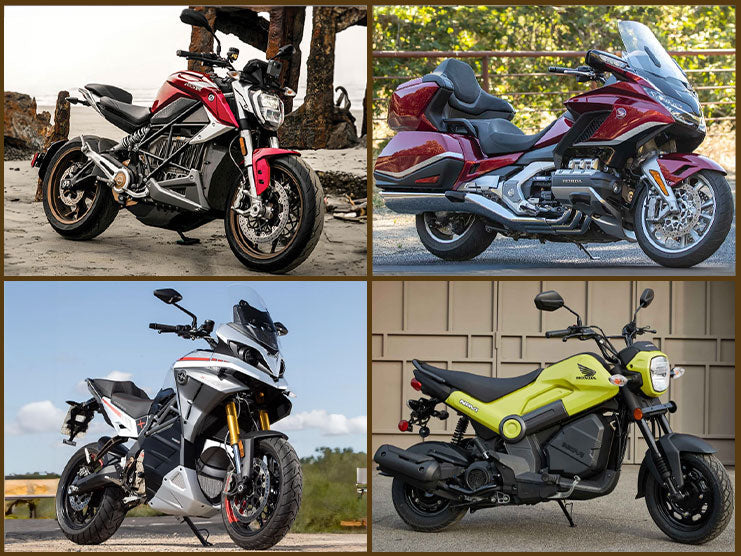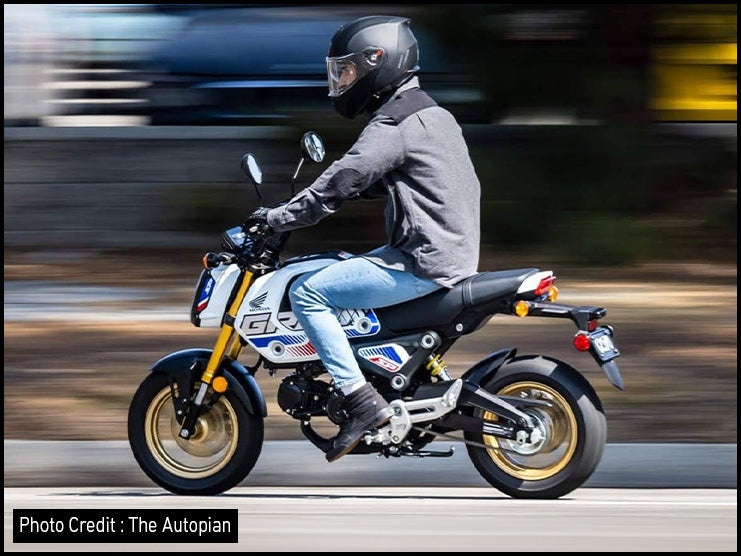Table of Content
Have you ever listened to the cool roaring sound of a motorcycle engine and wondered why it doesn’t have an automatic gear shifter like in a car? Unlike cars, which only require you to step on the gas pedal and you are on your way, motorcycles are a bit complex to operate. This implies that the rider has to operate both the clutch and the gear shifter to switch between gears. But why is this?
Several factors explain why motorcycles have not adopted automatic transmissions. Although many modern motorcycles come with automatic or Dual Clutch Transmission (DCT), the motorcycling community is not willing to let the manual transmission go. Continue reading this article to learn why there is little to no demand for automatic motorcycles.

1. Why Do Manual Transmissions Still Rule the Motorcycle World?
Motorcycles are unlike cars, where the rider sits inside a caged structure. They are about the feeling of the ride, enjoying the freedom, and being in control of the machine. You decide how the engine will deliver the power to the rear wheel, and that is where manual transmissions come in.
Most motorcycles employ manual transmissions. It is the rider who chooses when to change the gear using a clutch and a shifter. It may sound a bit confusing to those who are completely new to motorcycling, but for most riders, learning how to shift gears is one of the exciting parts of riding a motorcycle. Here's why manual transmission is the best part about motorcycling for many motorcycle enthusiasts:
1.1 Engine Braking
Manual transmissions enable riders to use engine braking. This means they can decelerate the motorcycle using the down shifter and the back pressure from the engine rather than just the brakes. It can become very useful for smoother operation.
1.2 Feeling the Power
In a manual transmission motorcycle, the rider controls how the engine produces the power. This is what pushes you in the forward direction when shifting up through the gears and provides a more exciting riding experience.
1.3 Customization for Different Situations
With manual transmission, riders can select the right gear for a specific circumstance. Do you have to move through slow traffic? You can switch to a lower gear, providing more control over the motorcycle.
Are you looking to hit the open road and want more power to accelerate quickly? Shift up for maximum power output from the engine. However, reduce the engine revolutions to not put extra load on it. This is done by riding in the higher gear. Such flexibility enables the rider to control the bike and manage its power more effectively, considering the specific riding situation.
1.4 A Sense of Accomplishment
In manual transmission motorcycles, there is nothing more satisfying than learning to master the smooth changing of gears. However, it comes after continuous practice. It is one of the most important skills that provide confidence to the rider and a feeling of belonging to the motorcycle.
1.5 Performance Advantage
Manual transmissions give riders better control over the amount of power the engine produces. This is particularly relevant in the case of high-performance motorcycles, as they demand precise and customized control over the bike and engine power.
Take the example of a racing car driver. He will not desire an automatic gear shift to determine when to shift a gear. There are moments in a race when you have to decide how much power is required and whether to accelerate, decelerate, slow down, and apply brakes.
In a manual transmission, the rider has complete control of the gear selection and can decide when to shift to attain maximum acceleration or to have a smooth ride, especially when riding a powerful motorbike.
1.6 Built to be Light and Nimble

Manual transmissions are usually smaller and lighter than automatic ones. Automatic transmissions are more complex and have torque converters. This makes automatic motorcycles heavier than manual ones.
The weight of a motorcycle is an important part of the design and engineering processes. The lighter the motorcycle, the better its handling and maneuverability.
1.7 Keeping Costs Down
Manual motorcycles are easier to produce and repair than automatic ones. This, in turn, means lower costs for manufacturing a manual motorcycle. As a result, you get the motorcycle at a cheaper price. It is always desirable to get a stylish motorcycle with good performance and control at an affordable price.
1.8 Less Stuff to Break
Automatic transmissions have more components that can go bad. Meanwhile, manual transmissions are much more basic and contain fewer components. This makes manual transmissions less complex and easier to work on. This also means fewer trips to the mechanic and less expenditure on the maintenance and repair of manual motorcycles.
1.9 A Matter of Preference
Most riders prefer being more involved in the riding process and experience. Changing gears is the essence of riding a motorcycle, making the ride more interesting and exciting. It is similar to controlling a motorcycle and its power more than the motorbike controlling itself.
2. Automatics Aren't Totally Out of the Picture
Even though manual transmission dominates the motorcycle market, automatic motorcycles aren't completely out of the picture. These bikes provide a different kind of feel while riding and use features like an automatic clutch or continuously variable transmission (CVT) to shift gears for the rider.
2.1 Automatic Clutches
Suppose the clutch of a standard motorcycle is replaced with an automatic one. This means riders do not need to pull a lever to shift gears. However, they can decide when to shift the gear by a button or small paddle/shifter. It is much like having an automatic motorcycle with the control of gear selection.
2.2 Continuously Variable Transmission (CVTs)
These transmissions do not include gears. However, they employ belts or pulleys to deliver the power from the engine to the rear wheel smoothly. It is like having infinite gears that perfectly match all speed levels. CVTs are primarily available in scooters. They are also installed in a few motorcycles like the Honda DN01 , Aprilia Mana 850 GT , and the CFMoto V5 .
Also Read: What Is a CVT Transmission in a Motorcycle?
2.3 Dual Clutch Transmission (DCT)
The first-ever dual-clutch transmission (DCT) was introduced by Honda in 2010. It is one of the best modern features found on a few Honda motorbikes, including the Honda Rebel 1100 DCT, Honda Gold Wing , and the Honda Africa Twin . The DCT feature allows riders to switch between automatic and manual modes by pressing only a button.
Automatic Mode
In automatic transmission mode, riders only need to twist the throttle to continue riding the motorcycle. They don’t need to be worried about engaging clutch and shifting gears.
Manual Mode
Meanwhile, if the rider wants more control over his motorbike, he can switch to the manual transmission mode. However, the manual transmission mode in DCT-equipped motorcycles is more complex than the conventional manual transmission. These bikes don’t have a clutch. Instead, they are fitted with a small pedal shifter to quickly shift gears, making motorcycle riding extraordinarily smooth and comfortable.
3. So, Why Aren't Automatic Motorcycles More Popular?
Automatic motorcycles are easy to use, particularly for first-time riders. But they aren’t as popular as manual motorcycles for a few reasons:
3.1 Less Engaging Ride
Many riders like interacting with the motorcycle, and this is where manual transmissions come into play. Handling manual motorcycles is also more fun and interesting than automatic ones, and shifting gears has a good role to play in it. In the case of automatic motorcycles, most riders fail to connect closely with the bike and the whole riding experience.
3.2 Price Point
Automatic motorcycles are usually more costly than bikes with manual transmissions. The additional feature of automatic clutches or CVTs increases the cost of manufacturing, thus increasing the price of a motorcycle. As a result, a manual transmission is seen as a preferred option for many riders, particularly those on a budget.
3.3 Performance Trade-Off
Although automatic motorcycles provide very accurate gear changes. However, they may take slightly longer to shift gears than a rider would want while riding a manual motorcycle. This can be disadvantageous for riders who like to ride their bikes more aggressively or need that extra energy to accelerate.
A manual transmission gives the rider full control of the gears, unlike an automatic transmission. A manual transmission allows riders more precise control and accurate gear shifts considering the particular situation. This, in turn, ensures optimal performance.
3.4 Limited Selection
You will have minimal options if you go to the market to buy an automatic motorcycle. On the contrary, the market is full of manual motorcycles. You can easily find a manual motorcycle that fits your size and riding preferences.
However, this is not the case with automatic motorcycles. If you are looking for an automatic transmission, you may not be able to find a perfect match. It is a great hindrance for newcomers or those who prefer automatic bikes.
3.5 Maintenance Matters
Since automatic motorcycles have more components, they can be pricier and harder to repair than manual motorcycles. This includes more frequent visits to the mechanic and higher repair costs. For riders who prefer simplicity and don’t want to go the extra mile while maintaining their bikes, manual motorcycles are a better option.
Automatic motorcycles are undoubtedly desirable to a certain extent. There is a huge demand among young and modern riders who want easy riding. These riders want motorcycles to be autonomous and loaded with advanced features.
However, the relatively low price, easy gear shifting, and superior power and control make manual transmission motorcycles the most popular for riders. If automatic motorcycles become more sophisticated and cheaper, they may find a good place in the motorcycle market one day.
Also Read: Automatic Vs. Manual Motorcycle Maintenance
4. Takeaway
Automatic motorcycles provide a simpler platform, particularly for learners, yet they have not become as popular due to several reasons. First, most riders like having total control of the bike they ride. Shifting gears becomes a huge part of how riders handle and maneuver the bike, making riding an exciting experience. Most riders don’t connect to the automatic transmission system.
Another main reason automatic motorcycles are not very popular is because they are expensive. This is because automatic motorcycles incorporate more technology than their manual counterparts. For those who want to start riding a motorcycle, the manual transmission is preferable because it is a cheaper option.
Although automatic motorcycles ensure a smooth transition when shifting gears, they may sometimes be slower to shift between gears. This can be disadvantageous for riders, especially those who prefer sport-style, aggressive riding, or more power when accelerating.
Therefore, the next time you encounter a motorcycle, you will understand why it most likely has a manual transmission. The sensation of power and interaction with the machine make manual motorcycles special and exciting.

























Leave a comment
All comments are moderated before being published.
This site is protected by hCaptcha and the hCaptcha Privacy Policy and Terms of Service apply.